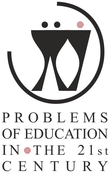APPROACHES IN DESIGN EDUCATION: THE ROLE OF PATTERNS AND SCENARIOS IN THE DESIGN STUDIO
| Title | APPROACHES IN DESIGN EDUCATION: THE ROLE OF PATTERNS AND SCENARIOS IN THE DESIGN STUDIO |
| Publication Type | Journal Article |
| Year of Publication | 2016 |
| Authors | Casakin, H, van Timmeren, A, Badke-Schaub, P |
| Journal | Problems of Education in the 21st Century |
| Volume | 69 |
| Start Page | 6-21 |
| Pagination | Discontinuous |
| Date Published | February/2016 |
| Type of Article | Original article |
| ISSN | 1822-7864 |
| Other Numbers | ICID: 1199718 |
| Keywords | design education, design studio, design thinking, educational setting, problem solving session, students teamwork |
| Abstract | The studio is the educational setting where architectural students dedicate a large part of their study career working individually and in groups. Supporting students with adequate methods to deal with ill-defined problems in the design studio is a major challenge for design education. Whereas different approaches such as using design patterns and developing scenarios are reported to improve the design activity, they were never investigated in the design studio. An empirical investigation was conducted in order to explore whether and how scenarios and patterns can help students in developing a useful knowledge base and enhance their abilities to solve design problems in the design studio. Students were requested to solve a series of design problems using these educational methods, while working individually and as a team. They were asked to produce as many design ideas as possible, while in the team setting were instructed to think aloud. The data assessed is gathered from surveys, problem solving sessions, and interviews. Thus, qualitative and quantitative analyses had to be done to find out about the different impact of the two methods in design. The results showed that as an educational approach, patterns aided in defining problems and analyzing idea solutions, mainly from a technical and functional perspective. Scenarios, on the other hand, were helpful to generate new ideas, and to enhance design creativity. Independently of the pedagogical method used in the design studio, working in teams showed to be central to enrich and enhance many aspects of the design activity. The findings have important implications for intervention programs in the design studio. |
| URL | http://journals.indexcopernicus.com/abstract.php?icid=1199718 |
| DOI | 10.33225/pec/16.69.06 |
| Refereed Designation | Refereed |
| Full Text |
